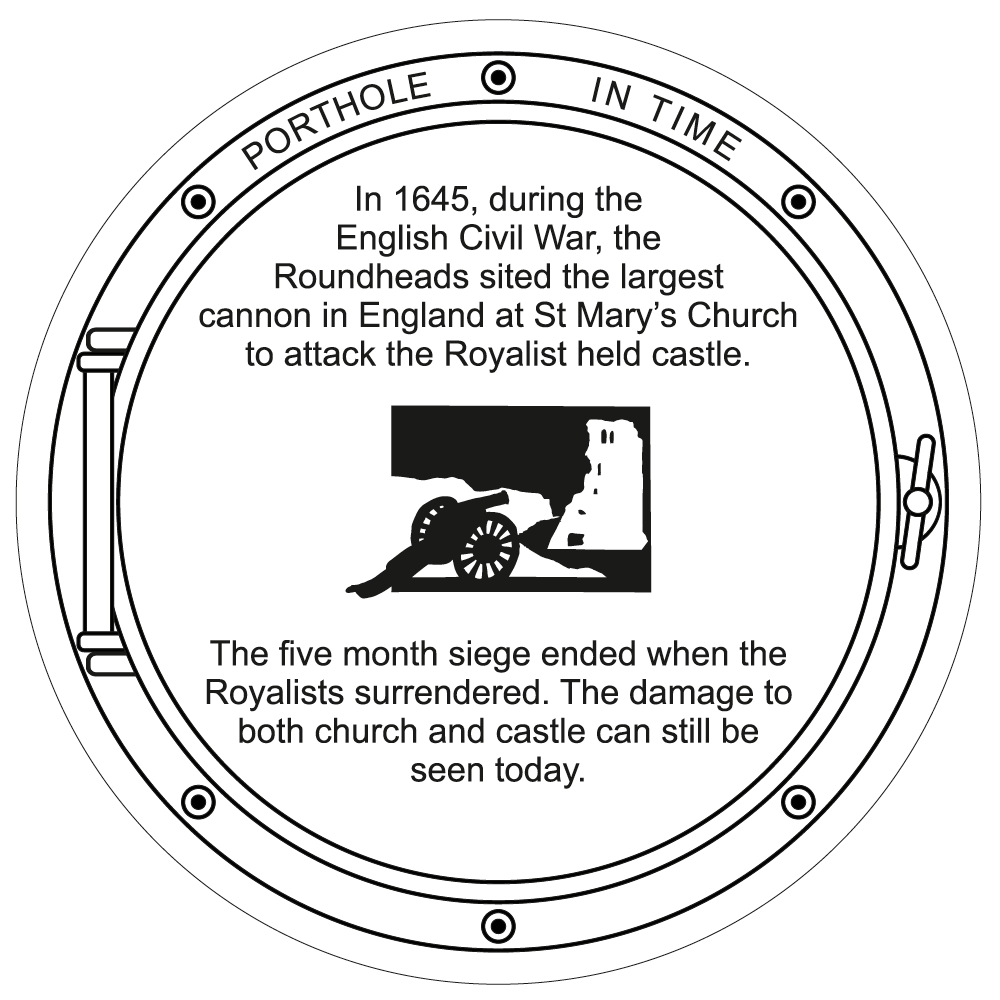
The English Civil Wars were a series of wars in the 17th century between the supporters of Parliament (Parliamentarians or ‘Roundheads’) and supporters of the King (Royalists or ‘Cavaliers’). The King was tried and executed in 1649 and Parliament achieved victory in 1651.
The impact of the wars on Scarborough was greatest in 1645, when a Parliamentary army fought to capture Scarborough Castle from Royalist forces. The Parliamentarians had already defeated a Royalist army in 1644 at the Battle of Marston Moor near York, and the city of York had surrendered. Seizing control of an isolated Scarborough and its castle would afford greater strategic influence over North Sea shipping. A siege of the castle was begun in February 1645.
The Parliamentary forces brought some of the biggest artillery pieces available to Scarborough. One was capable of firing cannon balls weighing 30kg (6 lbs). They placed some of this artillery in the chancel of St Mary’s Church, close to the castle, and fired repeatedly through the great east window. The firing from such a close range succeeded in splitting the castle keep in two, with the west side collapsing. When the Royalist forces returned fire from the castle, they badly damaged the church, damage which was aggravated by the vibrations caused by the Parliamentary artillery. The siege ended on 25th July 1645, when the Royalist garrison surrendered due to a high casualty rate, disease and starvation.
A second siege of the castle took place in 1648, when, again, Parliamentary forces besieged a Royalist garrison, resulting in a Parliamentary victory.
The legacy of the Civil Wars remains evident in the town. Most strikingly, the ruins of the eastern end of St Mary’s Church, and of the great east window, are still clearly visible, as is the half-ruined castle keep nearby.